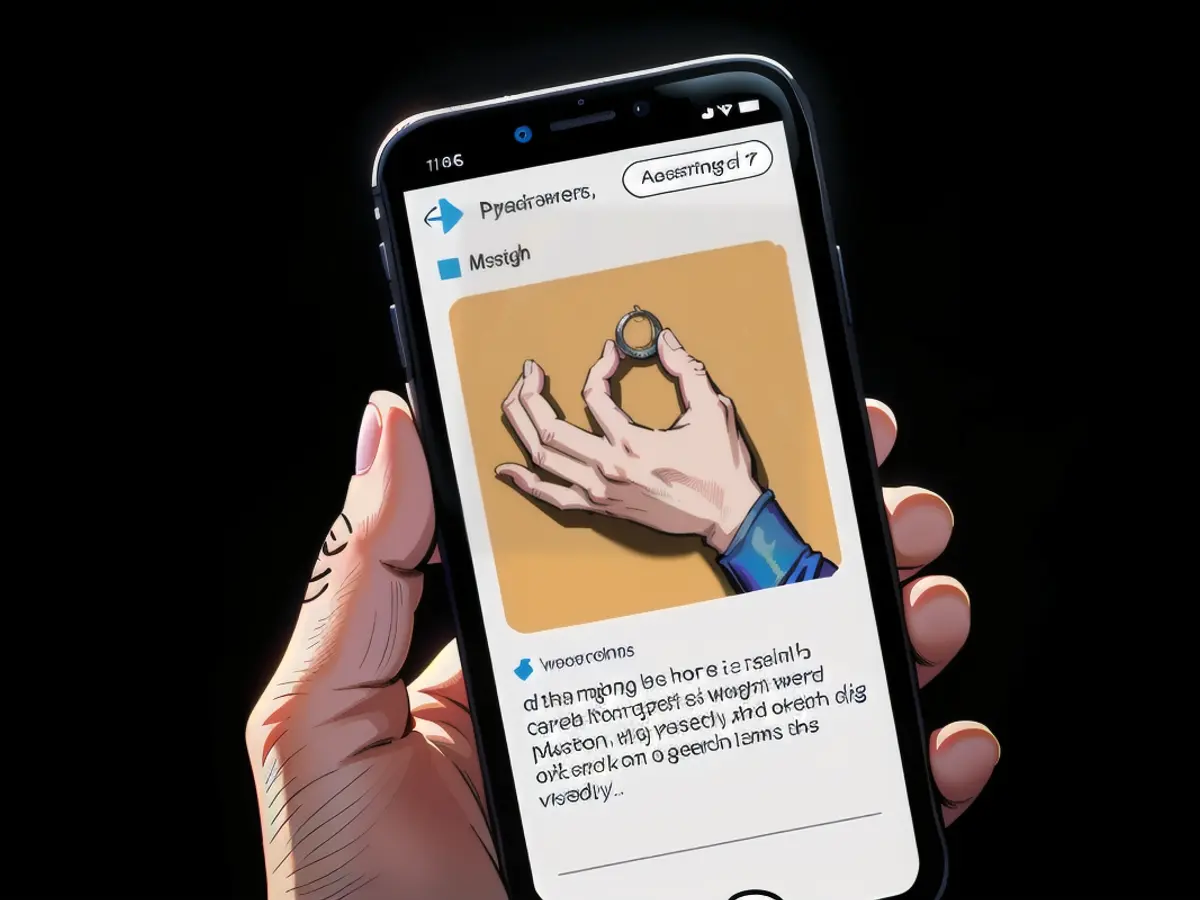Telecommunications - Telefónica targets market launch for hologram telephony in 2026
Hologram phone calls, in which the person you are talking to can be seen as a three-dimensional image, should be available in 2026, according to plans by mobile communications provider Telefónica(O2).
"The product should be ready for the market in two to three years," said Mallik Rao, Head of Technology at Telefónica Deutschland, to the German Press Agency in Munich. By then, the technology will have been integrated into the company's own system and sufficiently tested. "We want to start with corporate customers and offer it to the mass market in a second step."
O2 is currently testing holography, which uses virtual reality (VR) glasses, on its campus in Munich, where the company is celebrating the 25th anniversary of its network on Monday. It was launched in Germany in 1998 under the former company name Viag Interkom. Bavaria's Minister President Markus Söder (CSU) is expected as a guest and is expected to make a hologram phone call.
Industry works on standards
Since last year, the German mobile network operators Telekom, Vodafone and O2 as well as the French company Orange and the Japanese technology start-up Matsuko have been working on a project to define standards for connections between the networks. This should enable holography to be possible not only within a network, but also across networks, for example from an O2 customer to a Vodafone customer.
The mobile operators are working separately to enable holography in their networks. Good progress is being made, says O2 Innovation Manager Karsten Erlebach. "We are testing the first hologram conferences, but the technology still needs to be developed further." The 5G wireless standard is important for holography, but it is also possible with a fixed fiber optic network.
And the competition? A Vodafone spokesperson says that they are testing the everyday viability of hologram telephony with Matsuko: "We recently conducted an intercontinental hologram phone call between participants in the UK, Canada and the USA for the first time under live conditions with other partners." A Telekom spokeswoman says that the technology is being researched and tested. "But there is still some way to go before hologram technology is ready for the market."
Different types of holography
There are different versions of holography. In the most advanced version, the caller puts on virtual reality glasses and then sees a 3D image of the person they are calling looking into their smartphone or tablet. A camera records it. Matsuko software uses the recordings to develop a 3D image that appears in the caller's VR glasses. However, the caller does not see the other person in 3D. It is possible that both callers put on VR glasses and both have a 3D image in front of them. However, both images can then be seen with VR glasses, so their eyes are covered.
Another type of holography is used for group discussions or conferences. People look into tablets or smartphones without glasses and see the participants on the screen as if these images were sitting in front of them - in the same room on the other side of the table. This is supposed to look three-dimensional, but the effect is likely to be limited due to the lack of VR glasses.
According to Erlebach, a bandwidth of 20 megabits per second is required to transmit a hologram. "That's feasible and less than is needed for streaming high-resolution 4K films." In order for the 3D image to be seen smoothly, 35 frames per second must be transmitted - this is easily possible with "5G standalone" - i.e. pure 5G without 4G technology.
O2 and Bitkom see great potential
But does holography even have what it takes to become a mass phenomenon - or is it only something for proven technology fans? Erlebach is convinced of the potential. In the beginning, it would probably be mainly companies that would use holograms to create a feeling of closeness and organize virtual meetings.
The digital association Bitkom also emphasizes the advantages of the technology. "Hologram telephony makes communication with people who are in different locations more realistic," says Sebastian Klöß, Head of Consumer Technology. Holograms can give the impression that the other person is in the same room, even if they are somewhere else. "This promotes cross-location collaboration in a professional context as well as personal contact with friends and family." Facial expressions and gestures can be better conveyed. "The technology therefore offers the opportunity to enable a more emotional, realistic exchange even over long distances," says Klöß.
VR glasses will be needed for a strong three-dimensional flair, so additional equipment is required. That costs money. Suppliers include Microsoft, Meta and Apple. The price of the Meta Quest 3 is more than 500 euros. "The quality of the glasses is improving from model to model and prices are tending to fall," says Erlebach.
He believes that holograms, as seen in "Star Trek", "Star Wars" and other science fiction films, are still a thing of the future. In such works, images of people suddenly appear in the middle of the room and are clearly visible to everyone, even without VR glasses. It is possible to illuminate fog or gauze - transparent fabric - from below to create three-dimensional images, says O2 manager Erlebach. "But that's very expensive." Such aids are therefore not suitable for the introduction of holography in telecommunications. "It's something for visual effects at shows on stage, but nothing for face-to-face conversations."
Read also:
Source: www.stern.de








